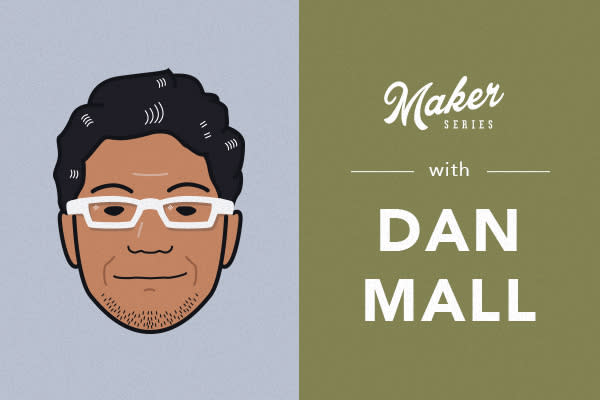Over the past few years, I’ve read a lot of Dan Mall’s articles, watched his seminars, and generally agreed with his techniques of how he tries to create websites. He’s a smart, passionate, and kind man who shares a lot of interesting insights into making websites. You can imagine my excitement when I found out that Sparkbox was bringing Dan to the office not only for the public Maker Series event, but an additional one-day intimate workshop with just our employees.
I found the session with Dan to be one of the most valuable experiences and knowledge shares I’ve ever been fortunate enough to attend. It made me realize that the personal interactions and time spent with a speaker are so much more valuable than watching a conference track. I would encourage any company that is looking to send some employees to a conference to consider an alternative option of bringing the speaker to you. It fosters an environment where you can have honest and raw discussions about the nitty gritty details of a process, project, and other details you may not want to publicly share in a Q&A at a busy lecture.
Additionally, I found the Maker Series event to be equally as intimate, even with more people in the room. One of my favorite things about talking to Dan is his ability to ask the right questions to make you evaluate yourself and question things you may not know you had to question. He was great at taking control of the room of 50 people and answering all their questions in meaningful ways that addressed a myriad of topics. Dan is great at having a well-crafted, confident answer to any question about your organization’s process. It’s rarely a vague fluffy, “Ehh, it depends. I’m just not sure about how your organization works”—he always has an articulate and easy-to-digest answer that truly makes you rethink your ways. He covered a variety of topics, but some of my favorite points he made were:
Visual Inventory
This is an idea that he’s talked about before, but taking a visual inventory of design directions is vitally important to the design process—and getting these discussions done quickly. He likes to take screenshots of existing sites and place the client’s logo overtop because it essentially conveys the same message as doing an exploratory comp himself. He covers three main points for this:
High fidelity in quickest time.
All deliverables lead to conversations (either on the phone or in hangout).
Replace “sign off” with “go on”—too much weight in “approvals.”
I really resonate with his idea of saying “go on” instead of “approval.” “Approval” is a heavy word in our industry. It creates the perception of finalizing an idea, when that is usually not the case, as it’s something we want to iterate on. Dan brought up a good point in our discussion that if we tell our clients that we want to be flexible, then they’re allowed to also be flexible—and that means no more rigid approvals. Just keep moving forward until the client says, “Hold on, we need to talk about something.”
Just because you do a lot of work doesn’t necessarily mean that it’s all valuable.
A lot of the points that Dan likes to drive home are to try different deliverables and to take a step back from the traditional and evaluate what is really important to achieving the client’s goals. We inevitably like to show a lot of results for the time we’re billing our client. A metaphor Dan used was a 600-page binder. Just because you have 600 pages of research doesn’t mean that it’s all valuable to the client. What is valuable to the client is distilling those 600 pages down to clarified important information. It made me evaluate my own process and how I like to heavily document everything—but what is actually valuable to the client? How can I clarify this for them? This also plays into some of the discussions previously about deliverables—what are we actually trying to achieve from a particular discussion with a client?
Build Ugly
This was one of my favorite “aha!” moments of the session. I had never thought about it before, but all too often we settle for “good enough” on projects. Whether it’s timing, budgets, or just honestly a project that has gone on for way too long—we settle. If it looks “good enough,” it usually won’t get revisited. Dan has successfully started having his developers prototype out interactions that are purposely built with neon colors, broken typography, and other blatantly ugly and wrong practices. While that might sound like a terrifying headache to some, I think it’s brilliant. It focuses purely on the behavior, and forces the designer to get involved to take it from an ugly prototype to a beautiful portion of the design. I look forward to building ugly things in the future!
Invisible Deliveries
As I join the Sparkbox team, a lot of discussion of our internal process has come up. We’re trying to figure it out, and there were many breakthroughs while talking to Dan. I really enjoyed when he talked about “invisible deliveries,” which are things that we keep track of internally that might not get delivered to the client. It feels like all too often we exclusively spend our time on the client-facing deliverables, but a lot of the behind-the-scenes work on planning and preparing for design and development is equally as important.
See for Yourself
These are just a couple of points that stuck out to me, but Dan has plenty of interesting perspectives to share. I highly recommend that you take the time to see him speak and take the time to have a personal conversation with him as he’s truly a welcoming and honest person. For more insights from the workshop, check out the collaborative notes.

